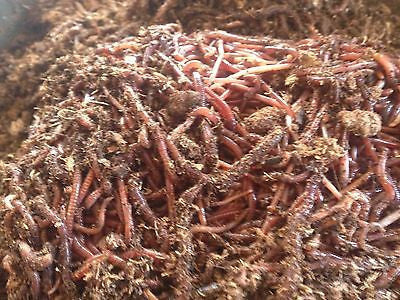How Red Wiggler Express can Save You Time, Stress, and Money.
This overview will present you to the red wiggler to include a much deeper on dive on the species and details on reproduction, life process, and recreation. We'll speak about how to preserve red wigglers and why they should be the best worm for most composters. The red wiggler (binomial name: eisenia fetida) is the world's most usual composting worm.
A study recommends that the two can create hybrid offspring, a sensation which needs to otherwise be taken into consideration difficult in between most worm varieties. Fun reality: The "fetid" part of the binomial name refers to what some claim is a foul-smelling secretion the red wiggler uses to ward off killers. But I have actually been managing them for several years and never ever discovered this! The anatomy of a red wiggler resembles that of various other typical earthworms; a long-segmented body starts at the sharp head and terminates at a slightly-flatted tail.
Some Ideas on Red Wiggler Express You Should Know
The digestive system tract is simple, starting at the mouth where the worm starts to eat its food before passing it on to the pharynx. The vocal cords is a muscle area which acts like a pump to pull food into the mouth prior to pumping it out into the esophagus. The esophagus is narrow and thin-walled and works as the "waiting room" for the gizzard.
Keep in mind: This demand for grinding is why grit is recommended in a worm container. The worm features no indigenous grinding capability so the worm counts on ingested grit to assist grind its food in the gizzard. The tummy is where the first chemical breakdown of food takes place with the help of a protein-busting enzyme.

(https://www.qdexx.com/US/NC/Hickory/Business%20Services/US-NC-Hickory-Business-Services-Red-Wiggler-Express-Red-Wiggler-Express)The intestine creates the longest part of the worm and is where the bulk of digestion happens by means of enymatic processes. The spreadings ultimately travel through the rectum at the end of the worm as capsules covered with a biologically-rich mucous. (You're not eating I really hope (Worm Farms Near Me).) Red wigglers will intertwine around each other, trading sperm with their skin.
Within 42 days, these infant worms will certainly reach sexual maturation as shown by the emergence of the clitellum. A mature red wiggler can be expected to live in between one to 3 years. The magnificent red wiggler may occasionally be used as a lure worm for smaller fish or as a healthy protein resource for hens and reptiles.
What Does Red Wiggler Express Do?
And as discussed above, they are the most usual composting worm in the globe. Rather, a combination of cost, strength, and convenience in a large array of temperature levels makes it the most appropriate composting worm for a lot of brand-new vermicomposters.
This is a typical method amongst worm carriers that do not intend to run the risk of having the worms being in a hot or cold stockroom over the weekend break. Worm farmers are not keeping worms in a situation where they prepare to ship. The worms must be gathered from their habitat initially, so cultivators will certainly often establish a Friday or Saturday target date in order to harvest in time for a Monday delivery.
To conserve on shipping cost, you may want to see if there are any type of nearby "Mother and Pop" shops via a Google search (Where To Buy Worms).
I call these the "Huge 3" factors of worm bin maintenance. If you keep all 3 within appropriate arrays, then there's not * that * much that can fail with your bin. As pointed out previously, red wigglers have a large temperature level resistance. For best results, keep a temperature of 55F-90F. Short departures out of that temperature level range are great.
Some Known Incorrect Statements About Red Wiggler Express

For ideal results, you desire to shoot for concerning 60-70% moisture level. At the ideal wetness levels which is just under 70% that handful should hardly produce one decrease of liquid.


The European Nightcrawler, the bigger cousin of the red wiggler, is equally as starved and likewise produces a great lure worm. It likes a bit of a cooler setting than the red wiggler. The African Nightcrawler is a really large composting worm and makes a beautiful, granular cast.
The Indian Blue is starved, yet also favors a warmer environment and it additionally displays a tendency to leave the container. The red wiggler is a sturdy worm and isn't as picky concerning its climate. I like to call it the Ford Taurus of vermicomposting worms; you will not brag to your hardcore composting buddies that you own them, but they will serve you well.
The Main Principles Of Red Wiggler Express
Guaranteed to life 1/2 pound of hand sorted Red Wigglers/Compost with worms (+500 worms) in different phases of life from cocoons to mature worms in their all-natural environment/bedding. Hand arranged worms reduced down on the disruption of the worms hence insuring real-time shipment. Red wiggler worms do not such as resonances or light.
Comments on “The Only Guide to Red Wiggler Express”